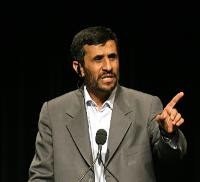With global attention fixated on Iran’s nuclear program, an equally significant development for Iran’s strategic outlook is being overlooked. The Shiite Crescent that began to take shape in the wake of the 2003 U.S. invasion of Iraq has effectively receded. Regardless of the outcome of the nuclear issue, Iran poses a much smaller threat to the region than it did just a few short years ago.
A number of events have converged to put Iran back in the box it now finds itself in. The most obvious and consequential of these are the onset of the Arab Spring and the uprising in Syria.
The concept of a Shiite Crescent was predicated on an unbroken chain of Iranian influence stretching into the heart of the Middle East via Iraq and Syria, and continuing on to the Levant and Palestine through Tehran’s ties to Hezbollah and Hamas. Given its location, Syria was always the lynchpin of this crescent. The loss of a friendly government in Damascus would deny Iran an overland route to ferry supplies to Hezbollah in Lebanon. Iran’s only option would then be to supply Hezbollah by sea, a perilous course given that the waters in between are dominated by Tehran’s adversaries.

